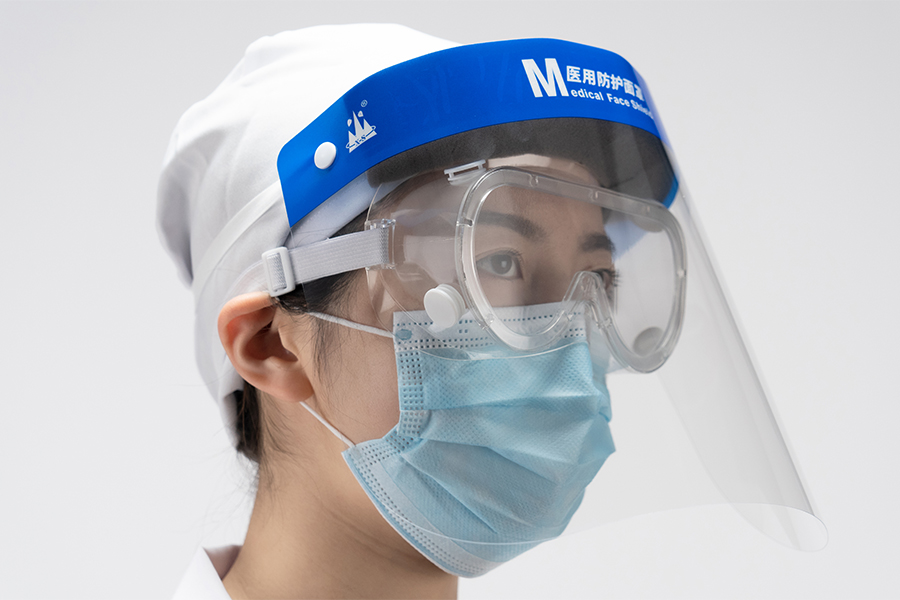Medical face shields are normally constructed using a combination of substances selected for his or her transparency, durability, and compatibility with habitual disinfection techniques. The predominant components of a medical face guard encompass:
Visor or Shield:The visor or defend is the primary component of the face shield and is typically product of clean, obvious materials including polycarbonate or PETG (polyethylene terephthalate glycol). These substances provide extremely good optical clarity, making an allowance for unobstructed imaginative and prescient whilst imparting protection towards splashes and aerosols.
Headband or Frame:The scarf or body helps the visor and ensures a secure suit on the wearer's head. These components are normally fabricated from materials like polypropylene, polycarbonate, or PVC (polyvinyl chloride), selected for their energy, flexibility, and resistance to deformation.
Foam Padding:Some clinical face shields feature foam padding alongside the forehead area for brought consolation for the duration of extended wear. This padding is generally manufactured from gentle, hypoallergenic materials like polyurethane foam or ethylene-vinyl acetate (EVA) foam.

Strap or Elastic Band:A strap or elastic band secures the face guard in place around the wearer's head. These bands are typically made of elastic substances like nylon or polyester, chosen for their elasticity and durability.
To face up to ordinary disinfection, scientific face shields are designed to be like minded with diverse cleaning and disinfection strategies commonly used in healthcare settings. The preference of materials and creation techniques ensures that the face protect can resist exposure to disinfectants without compromising its structural integrity or optical clarity. Here's how clinical face shields can withstand recurring disinfection:
Chemical Compatibility:The materials used in clinical face shields, consisting of polycarbonate, PETG, polypropylene, and PVC, are immune to a wide range of disinfectants generally utilized in healthcare settings, together with quaternary ammonium compounds, hydrogen peroxide, alcohol-based solutions, and bleach answers. These substances are chosen for his or her chemical compatibility and resistance to degradation while exposed to disinfectants.
Smooth, Non-Porous Surfaces:Medical face shields are designed with easy, non-porous surfaces which can be smooth to easy and disinfect. This design characteristic prevents the buildup of dust, particles, and microorganisms on the floor, facilitating effective disinfection.
Manufacturer Guidelines:Manufacturers of clinical face shields provide specific suggestions and suggestions for cleansing and disinfecting their products to preserve protection and effectiveness. These suggestions often encompass instructions on compatible disinfectants, cleansing techniques, and frequency of disinfection.

 English
English 中文简体
中文简体








